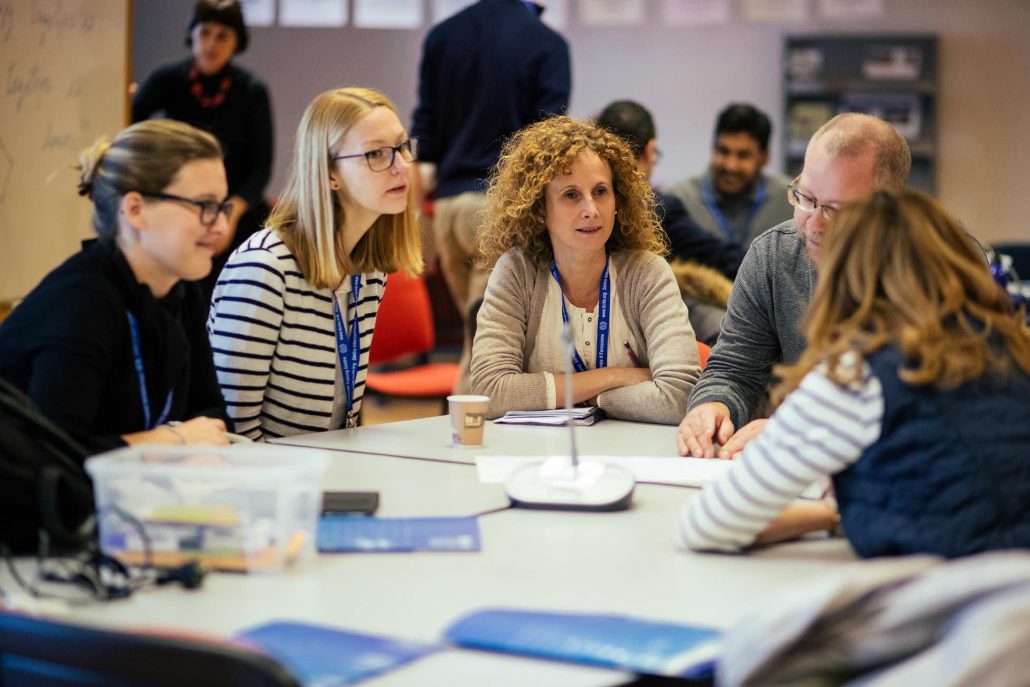Integrated Autonomy

Move from either-or to both-and solutions
Overview
This method allows the group to move from either-or conflicts to both-and solutions. It engages the participants in sharper strategic thinking, mutual understanding, and collaborative action by addressing the advantages of being more integrated and more autonomous, instead of thinking about them as either-or solutions. It explores ways to find a balanced mix of global integration and control, together with localized solutions and autonomy.
Image source: Liberating Structures
How to use it
- Develop innovative strategies to move forward.
- Prevent policies and actions from fluctuating arbitrarily to extremes.
- Recognize that complementary-yet-paradoxical pairs can be productively managed (there is not just one single decision to be made).
- Evaluate decisions assessing whether all aspects are being covered (“Are we boosting or attending to both sides?”)
- Evaluate and launch new strategies.
How to apply it
Start:
Invite participants to explore a question that makes the either-or options very clear, and ask them if it is really a one-or-the-other choice, or whether both options are possible or desirable.
- E.g. “Will our purpose be best served by increased local autonomy, customization, competition, and freedom among units/sites? Or, will our purpose be best served by increased global integration, standardization, and control among units/sites? Or both?”
Setting:
- Around tables or a group of chairs, paper to record.
- If multiple units or groups are involved in the dilemma being explored, representatives from each one should be present.
- Everyone has an equal opportunity to contribute.
- Participants work individually to generate topics, then subsequently work in small groups, and wrap up their work as a whole group.
Time/Steps:
- 5 minutes to introduce the idea of integrated-and-autonomy for the topic at hand, by using a question such as: “How is it that we can be more integrated and more autonomous at the same time?”
- Ask participants to share an example from past experience if they have one.
- 10 minutes to use the 1-2-4-All structure to generate a list of activities by asking questions such as, “Where is there tension between our desire to standardize and the request for more customizing or autonomy?”
- 10 minutes in groups of four: pick one activity for each group and ask the rationales for each course of action. E.g. “What is the rationale for standardizing? What is rationale for customizing?”
- 10 minutes to use 1-2-4-All to develop action steps that achieve one course of action and to develop action steps that achieve the alternative course of action.
- 5 minutes to ask whether there are options in either list that could boost both courses of action. E.g. “Which actions boost standardization (group A) and customization (group C)?” See diagram above.
- 15 minutes to ask “What modifications or creative ideas can be made to move actions from group A to group B or from group C to group B?” (Group B represents the “both-and” option – see diagram below).
- 10 minutes to create a priority list of the most promising action strategies that address both integration and autonomy.
- 15 minutes to refine actions steps with Troika Consulting and 15% Solutions.
Case study
Activity:
Designing the website(s)
Contact:
Minori Hara, M.Hara@itcilo.org (ICTS)
Gaël Lams, G.Lams@itcilo.org (ICTS)
Description:
The different departments all have their own websites, as has the Centre. To create more integration but also maintaining the autonomy of the departments, ICTS conducted several interviews with ITC-ILO staff members to determine possible solutions. The need for a proper governance of the website(s) was identified since some information could be found in various places. The integrated autonomy methodology was used in order to avoid a top-down approach. The methodology worked very well towards helping ICTS respond to everyone’s needs.
Tips
- Making progress on this challenge can shift what is possible for the whole organization: generate Min Specs as you start to understand what helps you succeed.
- Substitute collaboration and competition with integration and autonomy.
- Try to make both sides appreciative, “How is it that we are integrated-and-autonomous in our current operations?”
- Draw on field experience and imagination, “How can we do more of both?”
- The goal is fidelity in a few core global attributes and differentiation in each local setting.
- At an early stage of the activity, the creative tension between sides is almost invisible. As it progresses participants may get stuck or start to argue. To ignite a constructive discussion shift points of view by making use of the De Bono Six Thinking Hats method.





